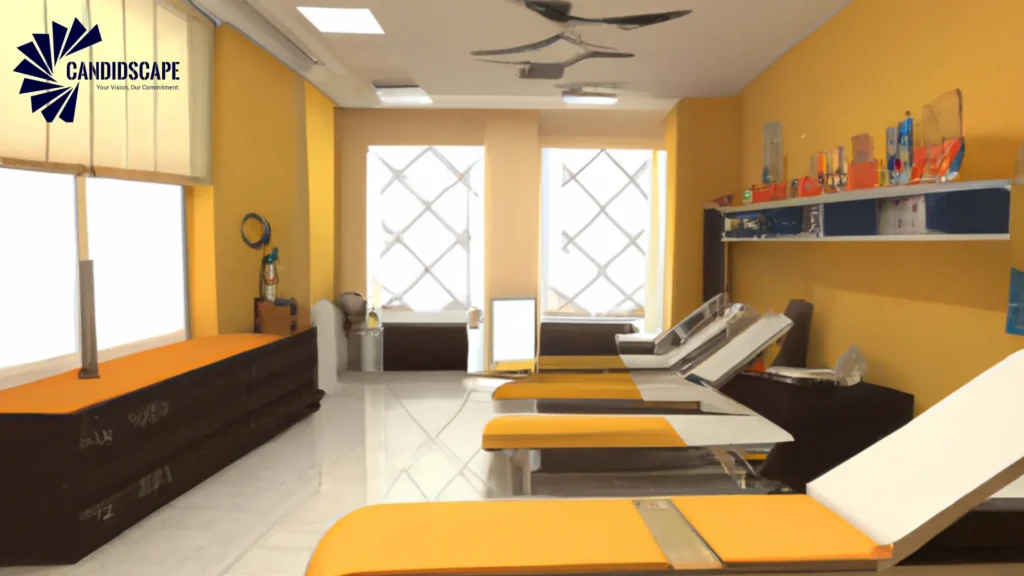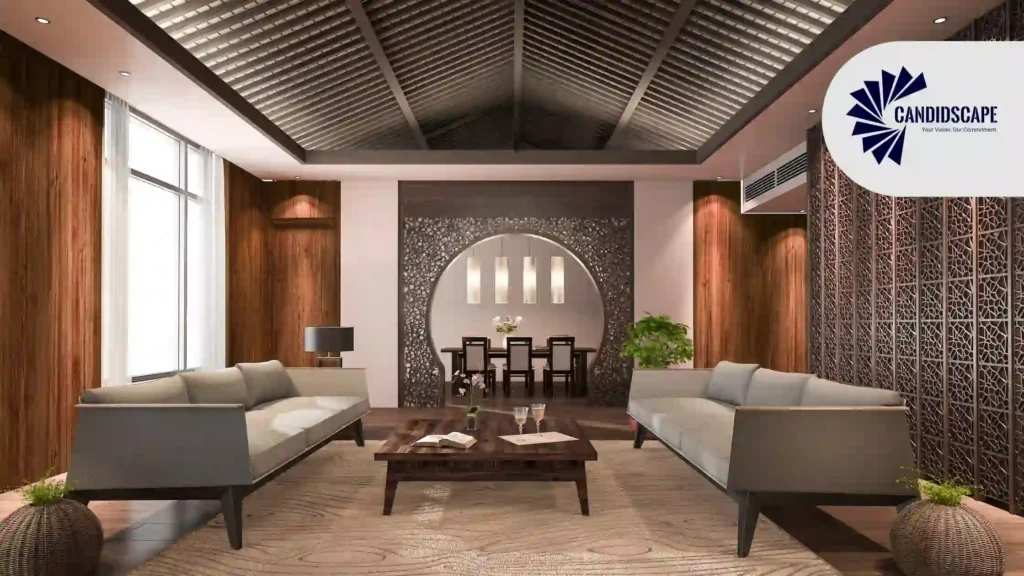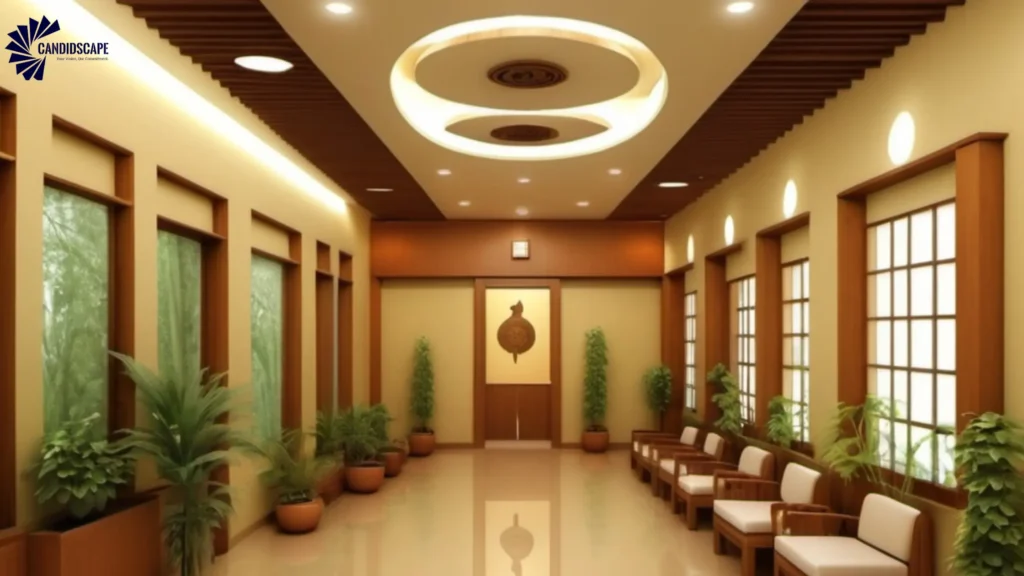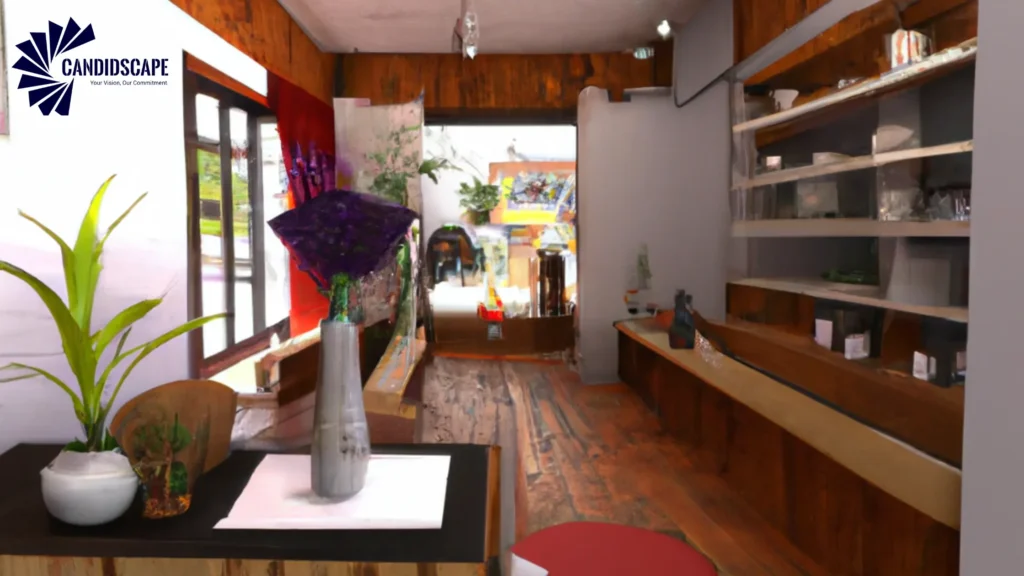Introduction
Ayurvedic Hospital Interior Design has the potential to transform healthcare spaces by harmoniously blending ancient wisdom with contemporary design principles. This article explores the art of creating healing environments rooted in Ayurveda, the ancient Indian holistic healing system.
By understanding the influence of doshas on design, incorporating natural elements, and applying color psychology, we will demonstrate how thoughtful interior design enhances well-being and promotes healing. Join us on a journey through the intricacies of Ayurvedic design philosophy and discover its transformative power in shaping the future of healthcare spaces.

1. Introduction to Ayurvedic Hospital Interior Design
Exploring the Intersection of Ayurveda and Interior Design
Welcome to a serene world where ancient Ayurvedic principles meet modern interior design aesthetics. In Candidscape’s Ayurvedic hospital interior design, every element is meticulously curated to promote healing and harmony, creating spaces that resonate with tranquility and balance. The integration of these principles into healthcare environments fosters a more supportive atmosphere for patients, staff, and visitors alike.
Ayurveda, derived from the Sanskrit words “Ayus” (life) and “Veda” (knowledge), offers a comprehensive understanding of health and well-being. In today’s fast-paced world, where healthcare often feels impersonal, infusing Ayurvedic concepts into hospital design creates a nurturing environment that acknowledges the holistic nature of health.

2. Principles of Ayurveda in Interior Design
Understanding the Doshas and Their Influence on Design
At the core of Ayurvedic philosophy are the three doshas: Vata, Pitta, and Kapha. These doshas represent the elemental forces that govern our physical and mental characteristics. Understanding how these doshas influence design choices allows us to create spaces that cater to individual needs, promoting balance and well-being.
- Vata: Characterized by air and space, Vata is associated with creativity, movement, and lightness. Spaces designed for Vata individuals should emphasize light colors, open areas, and organic shapes to encourage calmness and stability.
- Pitta: Governed by fire and water, Pitta represents transformation, intelligence, and activity. Pitta-dominant spaces benefit from cooling colors, balanced lighting, and materials that foster relaxation.
- Kapha: Comprising earth and water, Kapha embodies stability, strength, and endurance. Spaces designed for Kapha should incorporate earthy tones, comforting textures, and soft furnishings to instill a sense of grounding and comfort.
By tailoring interior designs to align with these doshic characteristics, Candidscape enhances the healing experience for all patients, ensuring their environments promote balance and support recovery.
3. Creating a Healing Environment
Enhancing Well-being Through Spatial Design
A key aspect of Ayurvedic hospital interior design is crafting a healing environment that supports the body’s natural ability to restore and rejuvenate. From calming color palettes to ergonomic furniture placement, every detail is carefully considered to enhance well-being and promote healing.
- Spatial Layout: Open layouts with designated quiet areas encourage relaxation, while also allowing for social interaction among patients. Thoughtfully placed seating areas promote community and support recovery through social connections.
- Ergonomic Design: Furniture and fixtures must prioritize comfort, especially in waiting and treatment areas. Ergonomically designed chairs, adjustable beds, and accessible spaces ensure patients can navigate the environment with ease and comfort.
- Acoustic Considerations: Sound plays a crucial role in the healing process. Utilizing sound-absorbing materials, soft music, or nature sounds can help create a tranquil atmosphere that soothes the mind and spirit.

4. Incorporating Natural Elements and Sustainability
The Role of Nature in Ayurvedic Design
Natural elements are vital in Ayurvedic hospital interior design, connecting patients with the healing power of nature. The concept of “biophilia,” or the innate human connection to nature, is increasingly recognized for its health benefits. By incorporating sustainable materials, biophilic design elements, and green spaces, these interiors not only enhance aesthetics but also foster peace, vitality, and a connection to the natural world.
- Natural Materials: Using materials such as wood, stone, and organic fabrics promotes a sense of authenticity and connection to the environment. Candidscape emphasizes sustainable sourcing, ensuring that materials are ethically harvested and environmentally friendly.
- Indoor Gardens: Integrating green spaces, such as indoor gardens or therapeutic courtyards, allows patients to engage with nature, enhancing mood and reducing stress. These spaces offer areas for meditation and reflection, further supporting healing.
- Natural Light: Maximizing natural light through large windows, skylights, and light wells is essential in Ayurvedic design. Natural light has been shown to improve mood, regulate circadian rhythms, and enhance overall well-being.
5. Color Psychology in Ayurvedic Design
Using Colors to Balance Energy in Healing Spaces
Color plays a crucial role in creating a harmonious and healing environment in Ayurvedic hospital interior design. Different colors are believed to affect our energies and emotions according to Ayurvedic principles. For instance, warm colors like red and orange promote vitality, while cool colors like blue and green induce calm. By strategically using colors in interior design, we can create spaces that help balance patients’ energy and promote healing.
- Warm Colors: Red and orange can stimulate energy and positivity, making them suitable for communal areas where social interaction occurs. However, they should be used sparingly to avoid overwhelming the senses.
- Cool Colors: Blue and green promote tranquility and relaxation, making them ideal for patient rooms and recovery areas. These colors help to create a serene environment conducive to healing.
- Earthy Tones: Incorporating earthy colors, such as browns and tans, creates a grounding effect, connecting patients to the earth and promoting stability. These tones work well in various areas, enhancing the overall calming aesthetic.
6. Functional Layout and Flow in Healing Spaces
Designing Spaces for Efficient Healing Processes
In Ayurvedic design, the layout and flow of spaces are carefully planned to optimize the healing process. Spaces are organized to promote calm and relaxation while ensuring efficiency in care delivery. By creating functional layouts that facilitate easy movement and access, Ayurvedic hospitals can enhance the overall healing experience for both patients and staff.
- Zoning: Designating specific zones for different activities—such as treatment, rest, and social interaction—creates a sense of order and clarity. This zoning aids in reducing stress and confusion, making it easier for patients and staff to navigate the space.
- Pathways: Thoughtfully designed pathways ensure that patients can move through the facility without feeling restricted. Wider corridors and clear signage enhance accessibility and comfort.
- Flexibility: Spaces should be designed with flexibility in mind. For example, multi-purpose rooms can adapt to various activities, whether they are used for group therapies, yoga sessions, or community events.

7. Integrating Traditional and Modern Design Elements
Marrying Ancient Wisdom with Contemporary Design
A key principle of Candidscape’s Ayurvedic hospital interior design is the integration of traditional Ayurvedic concepts with modern design elements. By blending ancient wisdom with contemporary aesthetics, Candidscape creates spaces that honor Ayurveda’s roots while catering to modern clients’ needs and preferences. This fusion results in unique and innovative healing environments that are both visually appealing and functionally efficient.
- Traditional Motifs: Incorporating traditional Indian motifs and symbols in decorative elements, such as wall art, textiles, and furniture, fosters a cultural connection and reinforces the significance of Ayurveda.
- Modern Aesthetics: Clean lines, minimalist furniture, and contemporary fixtures balance the richness of traditional design with the simplicity and efficiency of modern aesthetics. This blend appeals to a diverse range of clients, from patients to healthcare professionals.
- Innovative Technology: Utilizing modern technology, such as smart lighting and climate control systems, enhances patient comfort and ensures optimal conditions for healing.
8. Case Studies and Success Stories in Candidscape Designs
Real-world Applications of Ayurvedic Design Principles
Candidscape’s Ayurvedic design principles have been successfully applied in numerous real-world projects, yielding tangible benefits for patients and healthcare providers. By incorporating Ayurvedic concepts into hospital interior design, Candidscape has created healing spaces that are not only beautiful but also support the health and well-being of those who inhabit them. These case studies serve as a testament to the effectiveness and relevance of Ayurvedic design in modern healthcare settings.
- Case Study 1: Healing Hospital in Bangalore: This project involved the transformation of a conventional hospital into a serene Ayurvedic space. Key changes included the introduction of natural materials, indoor gardens, and the use of color psychology to promote relaxation. Patient feedback indicated a significant decrease in anxiety levels post-renovation.
- Case Study 2: Wellness Center Retreat: Candidscape designed a wellness retreat that emphasized Ayurvedic healing principles. The integration of yoga spaces, meditation rooms, and natural light throughout the facility fostered a healing atmosphere that encouraged both physical and mental recovery.
- Case Study 3: Community Health Clinic: A local community clinic was reimagined with Ayurvedic design principles, resulting in enhanced patient flow and improved accessibility. The incorporation of natural elements and calming colors helped create a welcoming environment for patients of all ages.
Conclusion – Ayurvedic Hospital Interior Design
Ayurvedic Hospital Interior Design presents a unique approach to creating spaces that prioritize patients’ well-being and healing. By integrating traditional principles with modern design elements, these environments promote physical recovery and nurture a sense of balance and harmony. As the healthcare industry continues to evolve, embracing Ayurveda’s wisdom in interior design can pave the way for a more holistic and patient-centered approach to healing.
At Candidscape, we believe in the transformative power of design, and we invite you to join us on this journey where design meets wellness. Together, we can shape a healthier future for all, one thoughtfully designed space at a time.
FAQs
- How does Ayurvedic Hospital Interior Design differ from conventional hospital design? Ayurvedic hospital interior design focuses on creating healing environments that promote well-being by incorporating natural elements, color psychology, and the principles of Ayurveda. In contrast, conventional hospital design often prioritizes functionality and efficiency without considering the holistic aspects of healing. Candidscape’s approach ensures that every design element contributes to the overall health and well-being of patients.
- Are there specific color schemes recommended in Ayurvedic design for healthcare spaces? Yes, Ayurvedic design suggests using warm colors like red and orange for vitality, while cool colors like blue and green can create calm and tranquility. The choice of colors should align with the intended emotional and energetic effects on patients. By understanding these principles, Candidscape can create spaces that enhance the healing experience.
- Can Ayurvedic design principles be adapted to existing hospital structures? Absolutely! Ayurvedic design principles can be adapted to existing structures by incorporating natural elements, re-evaluating layouts, and using color psychology. Even minor changes can significantly enhance the healing environment while respecting the building’s original design. Candidscape’s expertise ensures that the adaptation process is seamless and effective, promoting better health outcomes for all users.
